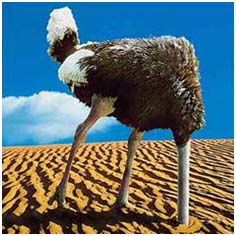Active methods of teaching Technology
9 form
Level: Intermediate
Aim:
- Development of associative thinking; abilities and skills to compare, analyze and evaluate while solving problems and communication tasks.
- Practice language skills in listening, reading, speaking on the language material of wise quotes.
- Tolerance development.
Stage1 «The Start»
1 step initiation: greeting/introducing
AMT: “My sweet name”.
T: We are having students from two classes today, though you know each other well enough, but I think we can learn even more unexpected or exciting things about each other, through introducing ourselves saying what we are like making adjectives with the letters of our names. e.g. Let me introduce myself to you , I’m nice, efficient, loyal, lovely, intelligent today: Nelli
Teacher: Wonderful.
– Not long ago one of my students said: “I need to improve my memory”.
– -How? – I asked
– He said, “I think by learning pomes by heart”.
– I said, “Don’t you learn enough of them for your Literature lessons?”
– He said “I want to make my language sound more beautiful by reciting poems at relevant moments”
– I asked, “Why not learn wise sayings then?”
– He kept silence.
And now is the moment to do it. The theme of the lesson is “WISE QUOTES”
I would like you to make groups by making a wise saying from the parts of it.
1 group: “Live in such a way, that if someone spoke badly of you, NO ONE WOULD BELIEVE IT”
2 group: “Don’t be pushed by your problems; be led by your dreams”.
3 group: “Don’t let a bad day make you feel like you have a bad life”.
2 step: immersion into the subject/setting goals
T: Ask as many questions as you can on the theme of the lesson using the taxonomy technique.
AMT: “6Qs”. Group work, 6 questions according to the taxonomy levels.
- What is a wise saying?
- Can you say the difference between a sentence and a wise saying?
- Where and in what cases can we use wise sayings?
- What spheres of life are wise sayings most helpful for teens?
- Can you make your own definition for a wise saying?
- Can you create your wise saying for your friend in need?
T: So your questions now make the aim of the lesson.
3 step: defining students’ expectations/planning personal meaning and formation of a safe learning environment.
T: When can wise sayings help us?
When we are in doubts, feel lost, discouraged. We are having guests today. And of course, some of you feel a bit nervous. Look at the slide and tell me: “Does anyone feel this way today?”

A scared ostrich
– Now the right answer: «The answer without good reasoning or good arguments is considered to be wrong!”
– Actually, ostriches never bury their heads in the sand because of fear, it is a myth. The Ostrich stretches his neck and puts his head on the ground in order to avoid being noticed.
– When do you feel scared, nervous, frightened, wishing not to be noticed? Put down all your fears on these cards, so that we would be able to solve all of them, using the wise sayings that we’ll learn today.
Stage2 «Working on the topic»
1 step: interactive lecture (explanation of the new material)
1.1 T: Sort out the muddle and make up a definition of a wise saying or quotation. (group work)
AMT: “Revolving door”
Students teach each other the wise sayings.
- Always be yourself, express yourself, have faith in yourself, do not go out and look for a successful personality and duplicate it. Bruce Lee
- If you only have a hammer, you tend to see every problem as a nail. Abraham Maslow
- It’s better to be a lion for a day than a sheep all your life. Elizabeth Kenny
- Learn from yesterday, live for today, hope for tomorrow. The most important thing is not to stop questioning. Albert Einstein
- We cannot our problems with the same thinking we used when we created them. Albert Einstein
- The most beautiful things in the world cannot be seen or even touched; they must be felt with the heart. Helen Keller
- I’ve failed over and over and over again in my life and that is why I succeed. Michael Jordan
- We never know a true value of the moment until it becomes a memory.
- Never judge the day by the harvest you reap, but by the seeds you plant.
- Success consists of going from failure to failure without loss of enthusiasm. Winston Churchill
- Always forgive your enemies – nothing annoys them so much. Oscar Wilde
- A jug fills drop by drop. Buddha
T: Which of the saying you like most of all? Which are easy to remember? Which you fully agree/disagree?
2 step: contents study (group work)
T: These are your cards with fears, take them, discuss in groups to find the ways of solving them.
AMT: “A letter to myself”.
A letter reflecting your ideas how to do with discouragement, shyness, lack of confidence, fears.
My dearest I,
You say you are nice, efficient, loyal, lovely, and intelligent and still have fears?
You feel…
Now, when I’m packed with wise thoughts, I think I can help you.
One way to solve this problem is to … as a wise saying says… As a result,…
Another solution would be to… Consequently,…
Finally, it would be a good idea to…. If this is done,…
I hope you will read the ideas carefully and start being wise.
Stage 3 «Completion of the educational activities»
1 step: summery (self-reflection)
AMT: “A MOTTO STAR”- self-reflection.
Students choose a wise saying to be their life motto.
-If you think you can or think you can’t you are right. H. Ford
-Big results require big ambitions. Heraclitus
-Always do your best, what you plant now, you will harvest later.
-The more you like yourself, the less you are like anyone else, which makes you unique.
-Success consists of going from failure to failure without loss of enthusiasm.
2 step: summery (lesson evaluation)
AMT: “Air balloons”
The students fill in the balloons with:
Blue – expectations
Red – my fears
Yellow – commentaries
Green – wishes
Purple – suggestion





Recent comments